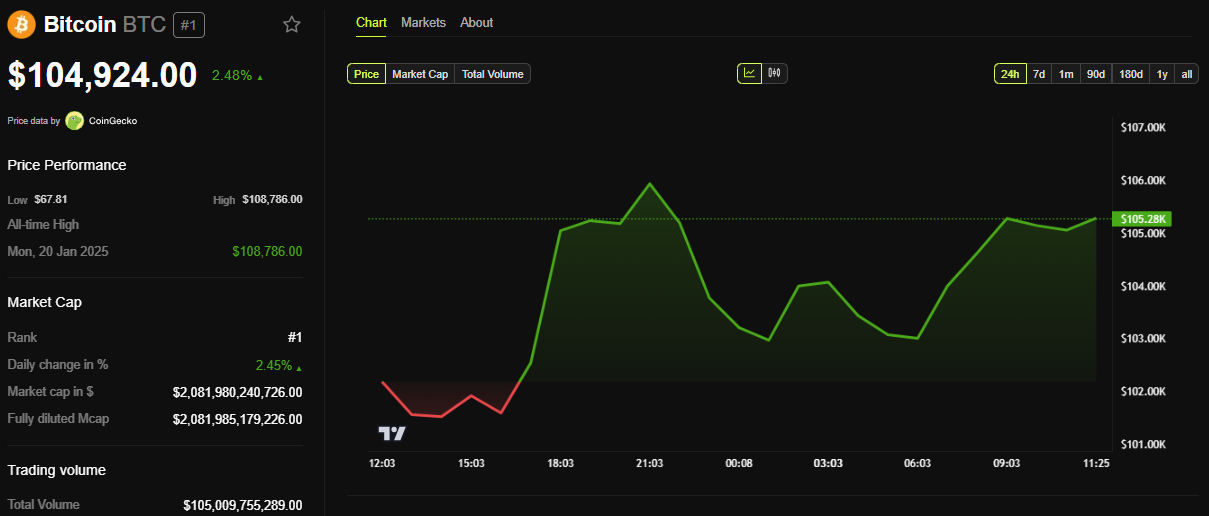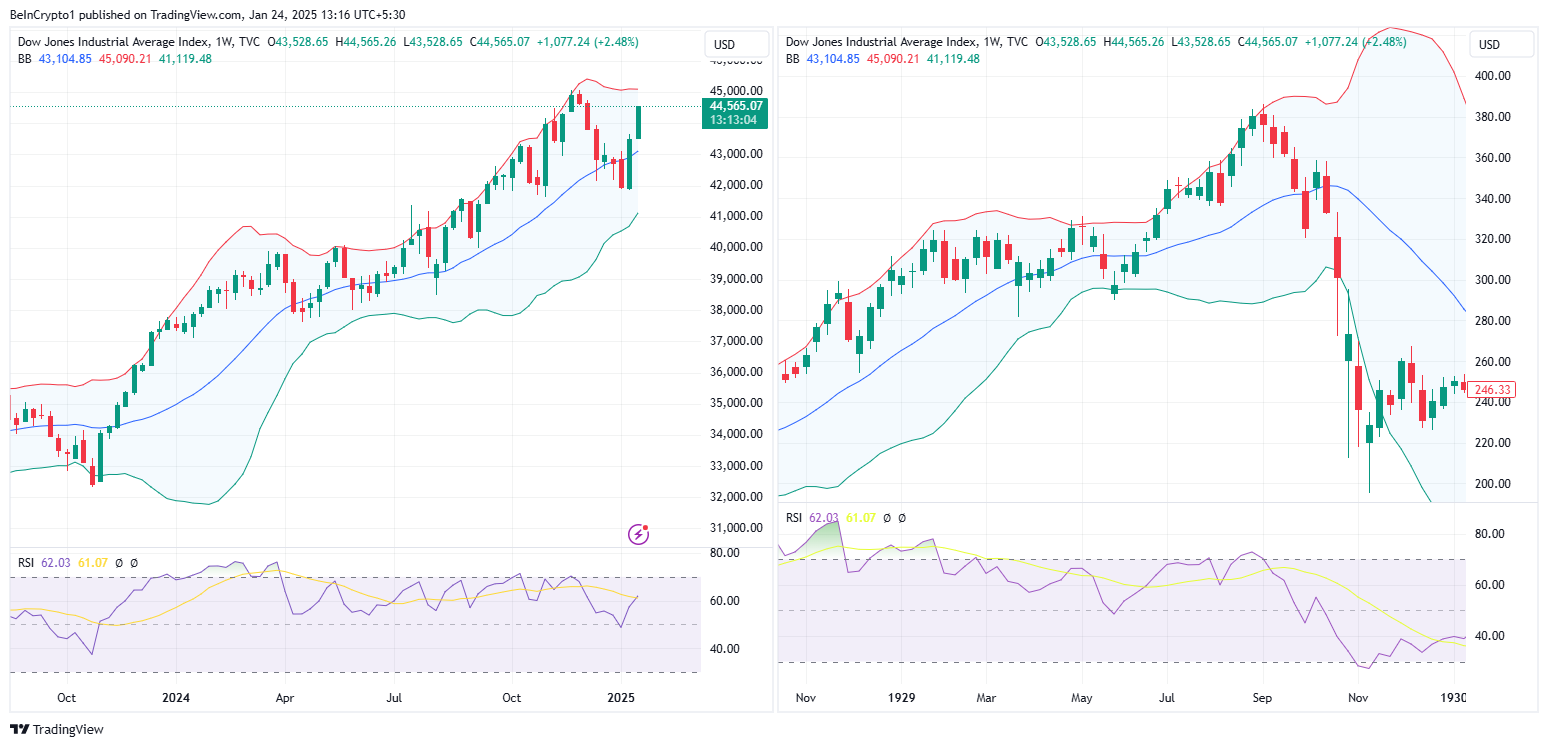| COINOTAG recommends • Exchange signup |
| 💹 Trade with pro tools |
| Fast execution, robust charts, clean risk controls. |
| 👉 Open account → |
| COINOTAG recommends • Exchange signup |
| 🚀 Smooth orders, clear control |
| Advanced order types and market depth in one view. |
| 👉 Create account → |
| COINOTAG recommends • Exchange signup |
| 📈 Clarity in volatile markets |
| Plan entries & exits, manage positions with discipline. |
| 👉 Sign up → |
| COINOTAG recommends • Exchange signup |
| ⚡ Speed, depth, reliability |
| Execute confidently when timing matters. |
| 👉 Open account → |
| COINOTAG recommends • Exchange signup |
| 🧭 A focused workflow for traders |
| Alerts, watchlists, and a repeatable process. |
| 👉 Get started → |
| COINOTAG recommends • Exchange signup |
| ✅ Data‑driven decisions |
| Focus on process—not noise. |
| 👉 Sign up → |
-
The Bank of Japan’s recent rate hike to 0.5% is set to impact global liquidity, creating ripples across the crypto, equities, and commodities markets.
-
As Bitcoin faced a 3% dip, analysts remain cautious, predicting potential flash crashes tied to evolving macroeconomic conditions.
-
Market experts with insights from COINOTAG express concerns about geopolitical tensions exacerbating pressures within the crypto sector.
Explore the implications of the BOJ’s rate hike on the crypto market, with Bitcoin prices reacting to macroeconomic shifts amid global uncertainties.
Understanding the BOJ’s Rate Hike and Its Ripple Effects on Crypto Markets
The Bank of Japan (BOJ) made headlines with its decision to raise the benchmark lending rate by 25 basis points, marking an increase to 0.5%, the highest rate seen since 2008. This strategic shift signals a serious approach to managing inflation, projected to hover between 2.6% and 2.8% in the coming years.
This third rate increase since the beginning of 2024 aims to stabilize the Japanese economy, yet it adds considerable complexity to a global financial landscape already fraught with uncertainty. With potential disruptions to the yen carry trade, investment strategies that leveraged low-interest borrowing could face sudden withdrawals, thereby reshaping market dynamics.
Bitcoin’s immediate 3% decline post-announcement illustrates the cryptocurrency’s heightened sensitivity to changes in macroeconomic policy. Following the BOJ’s actions, many traditional risk assets like equities and commodities also felt similar pressure, with broader financial market volatility expected.
| COINOTAG recommends • Professional traders group |
| 💎 Join a professional trading community |
| Work with senior traders, research‑backed setups, and risk‑first frameworks. |
| 👉 Join the group → |
| COINOTAG recommends • Professional traders group |
| 📊 Transparent performance, real process |
| Spot strategies with documented months of triple‑digit runs during strong trends; futures plans use defined R:R and sizing. |
| 👉 Get access → |
| COINOTAG recommends • Professional traders group |
| 🧭 Research → Plan → Execute |
| Daily levels, watchlists, and post‑trade reviews to build consistency. |
| 👉 Join now → |
| COINOTAG recommends • Professional traders group |
| 🛡️ Risk comes first |
| Sizing methods, invalidation rules, and R‑multiples baked into every plan. |
| 👉 Start today → |
| COINOTAG recommends • Professional traders group |
| 🧠 Learn the “why” behind each trade |
| Live breakdowns, playbooks, and framework‑first education. |
| 👉 Join the group → |
| COINOTAG recommends • Professional traders group |
| 🚀 Insider • APEX • INNER CIRCLE |
| Choose the depth you need—tools, coaching, and member rooms. |
| 👉 Explore tiers → |
Could Bitcoin’s Decline Indicate Larger Trends in the Market?
As Bitcoin attempts to retrace its steps following the initial decline, many analysts are raising alarms about the cryptocurrency’s long-term direction. Predictions suggest a chilling return to lower price levels, raising the specter of systemic issues that may become apparent as the market adjusts to macroeconomic shifts.
Comments from notable analysts, including a speculation from Financelancelot about a potential 50% drop in Bitcoin prices, draw unsettling comparisons to historical financial crises. This situation underscores the necessity of careful risk assessment in a market influenced so heavily by external economic factors.
| COINOTAG recommends • Exchange signup |
| 📈 Clear interface, precise orders |
| Sharp entries & exits with actionable alerts. |
| 👉 Create free account → |
| COINOTAG recommends • Exchange signup |
| 🧠 Smarter tools. Better decisions. |
| Depth analytics and risk features in one view. |
| 👉 Sign up → |
| COINOTAG recommends • Exchange signup |
| 🎯 Take control of entries & exits |
| Set alerts, define stops, execute consistently. |
| 👉 Open account → |
| COINOTAG recommends • Exchange signup |
| 🛠️ From idea to execution |
| Turn setups into plans with practical order types. |
| 👉 Join now → |
| COINOTAG recommends • Exchange signup |
| 📋 Trade your plan |
| Watchlists and routing that support focus. |
| 👉 Get started → |
| COINOTAG recommends • Exchange signup |
| 📊 Precision without the noise |
| Data‑first workflows for active traders. |
| 👉 Sign up → |

The pressure on Bitcoin also highlights the unpredictable nature of crypto investments during periods of economic change. Some analysts argue that the conditions leading up to a potential flash crash in late January are becoming just as palpable. Historical patterns, such as those observed during the 1929 stock market crash, have recently been mirrored by current market indicators, notably the Relative Strength Index (RSI).
| COINOTAG recommends • Traders club |
| ⚡ Futures with discipline |
| Defined R:R, pre‑set invalidation, execution checklists. |
| 👉 Join the club → |
| COINOTAG recommends • Traders club |
| 🎯 Spot strategies that compound |
| Momentum & accumulation frameworks managed with clear risk. |
| 👉 Get access → |
| COINOTAG recommends • Traders club |
| 🏛️ APEX tier for serious traders |
| Deep dives, analyst Q&A, and accountability sprints. |
| 👉 Explore APEX → |
| COINOTAG recommends • Traders club |
| 📈 Real‑time market structure |
| Key levels, liquidity zones, and actionable context. |
| 👉 Join now → |
| COINOTAG recommends • Traders club |
| 🔔 Smart alerts, not noise |
| Context‑rich notifications tied to plans and risk—never hype. |
| 👉 Get access → |
| COINOTAG recommends • Traders club |
| 🤝 Peer review & coaching |
| Hands‑on feedback that sharpens execution and risk control. |
| 👉 Join the club → |

The analyst sentiment varies, with voices like @0xKiryoko advocating a cautious optimism despite global factors that are influencing liquidity. The consensus seems clear: whether through upcoming events, such as VIX option expirations, or broader economic policies, the current landscape demands vigilance from investors.
Geopolitical Uncertainty and Its Role in Crypto Volatility
The interplay of domestic and international economic policies adds layers of complexity for cryptocurrency traders and investors. Observations from analysts, like Cypress Demanincor, emphasize that US economic policies under the Trump administration, particularly regarding digital assets, are also shaping expectations in the crypto market.
“While attention deservedly narrows on the BOJ’s rate hikes, the broader economic context cannot be ignored, particularly as it interacts with US trade policies,” Demanincor remarked.
| COINOTAG recommends • Exchange signup |
| 📈 Clear control for futures |
| Sizing, stops, and scenario planning tools. |
| 👉 Open futures account → |
| COINOTAG recommends • Exchange signup |
| 🧩 Structure your futures trades |
| Define entries & exits with advanced orders. |
| 👉 Sign up → |
| COINOTAG recommends • Exchange signup |
| 🛡️ Control volatility |
| Automate alerts and manage positions with discipline. |
| 👉 Get started → |
| COINOTAG recommends • Exchange signup |
| ⚙️ Execution you can rely on |
| Fast routing and meaningful depth insights. |
| 👉 Create account → |
| COINOTAG recommends • Exchange signup |
| 📒 Plan. Execute. Review. |
| Frameworks for consistent decision‑making. |
| 👉 Join now → |
| COINOTAG recommends • Exchange signup |
| 🧩 Choose clarity over complexity |
| Actionable, pro‑grade tools—no fluff. |
| 👉 Open account → |
As the market adapts to these changes, traders may find that past patterns of liquidity-driven sell-offs eventually give way to recovery phases, typically following initial shocks.
Current investment strategies need to embrace a willingness for patience. Historically, significant gains in Bitcoin’s cycle occur over just a handful of days, making it crucial for investors to adopt a long-view perspective.
| COINOTAG recommends • Members‑only research |
| 📌 Curated setups, clearly explained |
| Entry, invalidation, targets, and R:R defined before execution. |
| 👉 Get access → |
| COINOTAG recommends • Members‑only research |
| 🧠 Data‑led decision making |
| Technical + flow + context synthesized into actionable plans. |
| 👉 Join now → |
| COINOTAG recommends • Members‑only research |
| 🧱 Consistency over hype |
| Repeatable rules, realistic expectations, and a calmer mindset. |
| 👉 Get access → |
| COINOTAG recommends • Members‑only research |
| 🕒 Patience is an edge |
| Wait for confirmation and manage risk with checklists. |
| 👉 Join now → |
| COINOTAG recommends • Members‑only research |
| 💼 Professional mentorship |
| Guidance from seasoned traders and structured feedback loops. |
| 👉 Get access → |
| COINOTAG recommends • Members‑only research |
| 🧮 Track • Review • Improve |
| Documented PnL tracking and post‑mortems to accelerate learning. |
| 👉 Join now → |
Conclusion
In summary, the BOJ’s decision to raise interest rates has sent shockwaves through the crypto sphere, prompting a reevaluation of risk and investment strategies. With external factors like geopolitical tensions and economic policies complicating matters, investors should proceed with caution. The potential for volatility offers a challenging landscape, yet it also presents opportunities for strategic accumulation, reminding investors to look beyond short-term fluctuations in pursuit of long-term gains.
| COINOTAG recommends • Members‑only research |
| 📌 Curated setups, clearly explained |
| Entry, invalidation, targets, and R:R defined before execution. |
| 👉 Get access → |
| COINOTAG recommends • Members‑only research |
| 🧠 Data‑led decision making |
| Technical + flow + context synthesized into actionable plans. |
| 👉 Join now → |
| COINOTAG recommends • Members‑only research |
| 🧱 Consistency over hype |
| Repeatable rules, realistic expectations, and a calmer mindset. |
| 👉 Get access → |
| COINOTAG recommends • Members‑only research |
| 🕒 Patience is an edge |
| Wait for confirmation and manage risk with checklists. |
| 👉 Join now → |
| COINOTAG recommends • Members‑only research |
| 💼 Professional mentorship |
| Guidance from seasoned traders and structured feedback loops. |
| 👉 Get access → |
| COINOTAG recommends • Members‑only research |
| 🧮 Track • Review • Improve |
| Documented PnL tracking and post‑mortems to accelerate learning. |
| 👉 Join now → |









